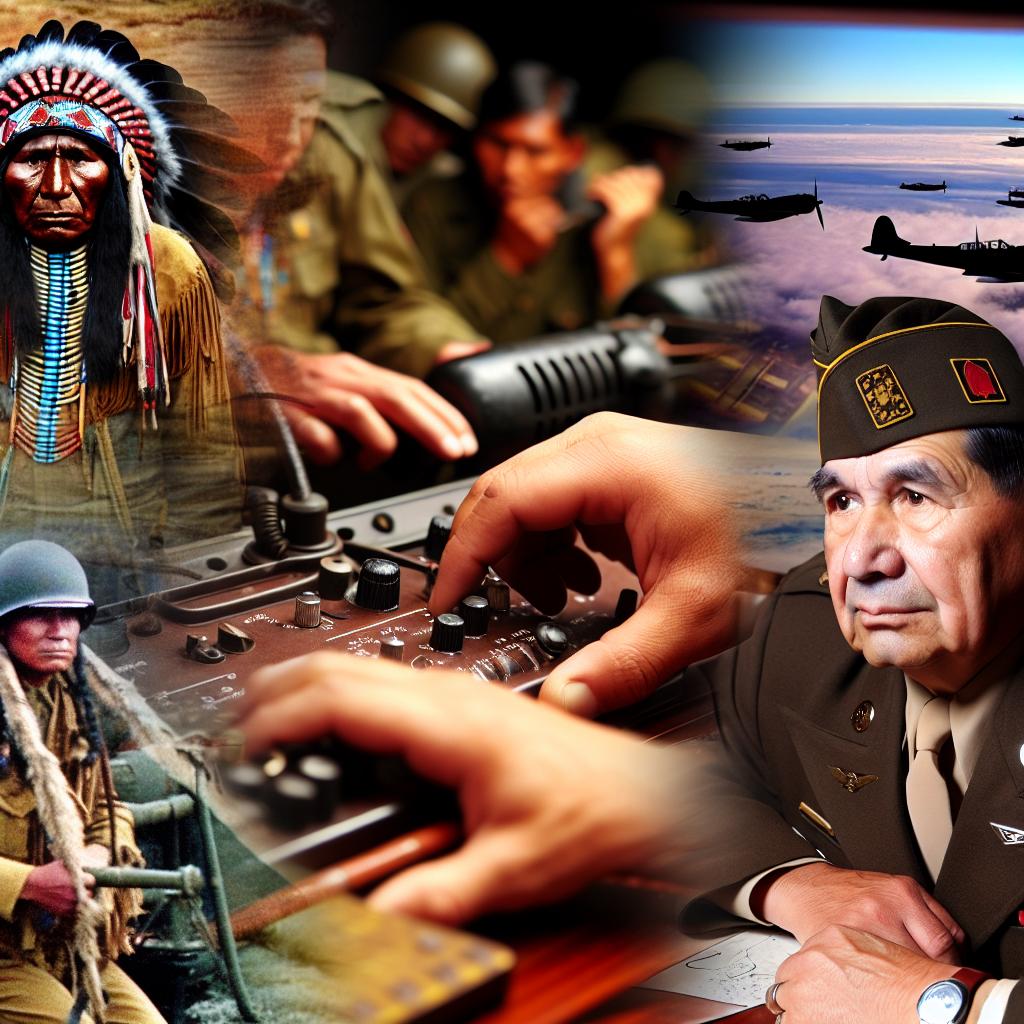The Origins of Code Talkers
During World War II, the United States military faced a significant challenge: the need for secure, unbreakable codes to communicate critical information across vast distances and amidst enemy lines. The solution to this problem was both ingenious and rooted deeply in the United States’ own cultural mosaic—utilizing Native American languages. These languages, which were largely unwritten and remained predominantly unknown outside their native communities, presented a unique opportunity. The concept of employing these languages as a means of secure communication was initially hinted at during World War I. However, it wasn’t until World War II that the idea was formalized and received significant acknowledgment.
Language Complexity and Security
The primary factor that made Native American languages an ideal choice for creating strong, secure codes was their complexity and distinctiveness. These languages often included intricate grammatical structures, vocabulary that did not translate easily into English or other languages, and pronunciation that could baffle even the most linguistically adept outsiders. Moreover, because these languages were unrecorded in written form, it was nearly impossible for enemy forces to intercept and decode messages. In a time when the decryption of communication could mean the difference between victory and defeat, such linguistic advantages were indispensable. This made Native American languages a secure communication tool that was virtually impenetrable to enemy codebreakers.
The Role in Military Operations
The use of Native American code talkers was especially prevalent in the Pacific Theater during WWII, where their contributions had a decisive impact on the success of American military operations. These individuals were tasked with the critical job of translating English military messages into their native languages, sending them securely, and then retranslating them back into English without loss of meaning. Such translations ensured that the complexity of military strategies, orders, and intricate details were communicated accurately and efficiently, an essential factor during high-stakes operations.
The precise and quick transmission of messages was crucial during certain operations where timing was a key component of success. The tactical advantage provided by code talkers’ services often meant the difference between success and failure in various military engagements. Their contributions enhanced the ability to conduct intricate operations with a greater degree of accuracy and minimal miscommunication.
The Navajo Code Talkers
Among the array of Native American tribes that contributed to the code talker program, the Navajo Nation holds a position of prominence. The group is most commonly associated with the code talker legacy due to the development of an extensive codebook that paired Navajo language terms with military vocabulary. This codebook evolved over time to encompass more than 600 terms, a testament to the dynamic and adaptive nature of their contributions.
The Navajo Code Talkers were particularly instrumental during critical moments of the Pacific campaigns, providing essential communication support during the long and grueling Battle of Iwo Jima. The Marines regarded the Navajo Code as unbreakable, and the code talkers themselves were pivotal assets who were integral to many operational successes. Their efforts not only enhanced the effectiveness of military strategies but also contributed significantly to the overall victory in the Pacific Theater.
Other Native American Languages Used
While the Navajo Code Talkers are perhaps the most widely recognized among the groups of code talkers, they were not the only Native American contributors. Numerous tribes across the United States offered their linguistic expertise. The Choctaw, Comanche, Hopi, Meskwaki, and other tribes were instrumental as well. Each of these groups developed unique coding systems based on their languages, all of which reinforced the security and versatility of military communications.
These diverse linguistic traditions provided a breadth of coding options, allowing for different communication codes tailored to specific operational needs. The involvement of multiple tribes broadened the scope and applicability of the code talker program, enhancing the overall effectiveness and reliability of transmitted military orders. Each tribe’s language contributed a unique set of phonetic and grammatical nuances, thus multiplying the complexity for any potential enemy attempting to intercept and decode them.
The Impact and Legacy
Despite their crucial role, the code talkers’ contributions remained largely unrecognized during and immediately after the conclusion of World War II. The classified nature of their work meant that their extraordinary efforts were not immediately acknowledged or celebrated publicly. It took several decades before their exploits were declassified and their contributions to securing an Allied victory received the public acknowledgment they deserved.
In recent years, efforts have been made at various levels to honor and commemorate the legacy of code talkers. Memorials have been erected, educational programs designed, and commemorative activities organized to instill a sense of pride and to educate the broader public about the critical role played by these unsung heroes. The recognition of their contributions continues to evolve, fostering a more profound appreciation of their impact and preserving their legacy for future generations.
Further Reading
For those intrigued by the history and legacy of Native American code talkers and seeking deeper insight, there is a wealth of resources available. A variety of books, documentaries, and scholarly articles delve into the nuanced and critical roles that these individuals played during World War II. Online archives house primary documents and firsthand accounts that shed light on their experiences and contributions. Engaging with these materials can provide anyone interested with a richer understanding of how language, cultural diversity, and strategic innovation intersected to influence the course of history during a pivotal time. The story of code talkers serves as a poignant reminder of how cultural richness can be harnessed in service of national security and triumph on the global stage.

